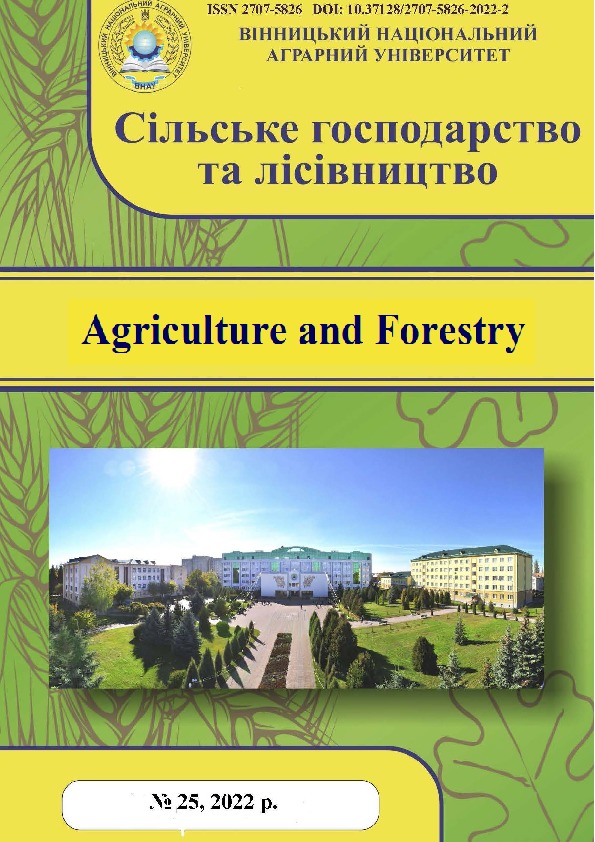id: 31687
Title: Phytosanitary state of the agroecosystem of winter wheat depending on the predecessors of perennial leguminous grasses
Authors: Tkachuk О., Kravets R.
Keywords: winter wheat, sowing, phytosanitary state, yield, predecessors, perennial leguminous grasses.
Date of publication: 2022-10-13 21:18:29
Last changes: 2022-10-13 21:18:29
Year of publication: 2022
Summary: The article deals with the issues of increasing the resistance of winter wheat crops to the effects of the most common diseases, weeds and pests for growing after the predecessors of six types of perennial leguminous grasses without using pesticides. The damage caused to the leaf surface of winter wheat by septoria and powdery mildew diseases has been shown. The number of cockchafer larvae has been analysed. Determining the predominant types of weeds in the context of predecessors the level of weed infestation of winter wheat crops has been researched. The level of winter wheat yield depending on its predecessors has been assessed and correlation-regression dependences between it and the spread of pests, diseases and weeds in their crops have been identified. A close correlation between winter wheat yield and the damage caused to the leaf surface by powdery mildew has been proved. It has been shown that the highest level of winter wheat yield is observed after meadow clover. The slightest damage to the leaf surface of winter wheat caused by powdery mildew has been found after the predecessor of meadow clover. After the predecessor of white sweet clover the damage caused to the winter wheat’s leaf surface by the septoria disease was minimal. During the sowing season of winter wheat, no cockchafer larvae were found in the arable layer of soil after the predecessors of alfalfa, white sweet clover and fodder galega. The smallest number of weeds during the spring growth of winter wheat was found after the predecessor of white sweet clover.Meadow clover provides the highest productivity level of the winter wheat yield in case of cultivation after six types of perennial leguminous grasses without additional use of mineral fertilisers – 5,8 t/ha. The minimal damage to the leaf surface of winter wheat plants caused by powdery mildew Erysiphe graminis DC has been found after the meadow clover predecessor – 6%,
without using fungicides. The damage to the leaf surface of winter wheat from Septoria tritici Mg disease without fungicides was the smallest after white sweet clover – 5%. During the sowing season of winter wheat no cockchafer larvae Melolontha melolontha L. has been disclosed in the arable layer of the soil after alfalfa, white sweet clover and fodder galega predecessors. The smallest number of weeds in the period of spring growth of winter wheat has been observed after white sweet clover predecessor – 12 pcs/m2.
URI: http://repository.vsau.org/repository/getfile.php/31687.pdf
Publication type: Статті у наукових фахових виданнях України (Copernicus та інші)
Publication: Agriculture and Forestry. 2022. № 2 (25). P. 143-151.
In the collections :
Published by: Адміністратор
File : 31687.pdf Size : 731696 byte Format : Adobe PDF Access : For all

| |
|
|